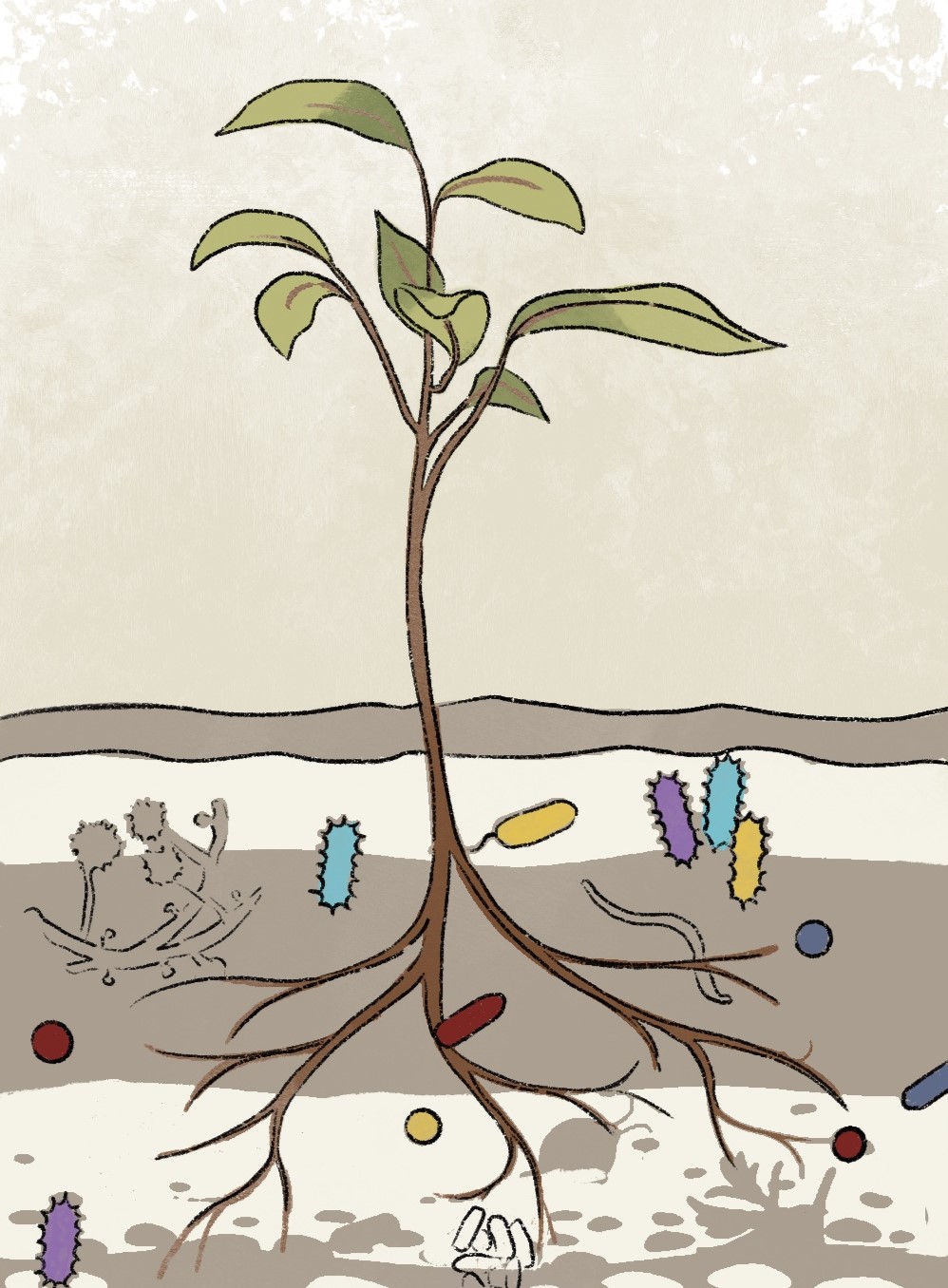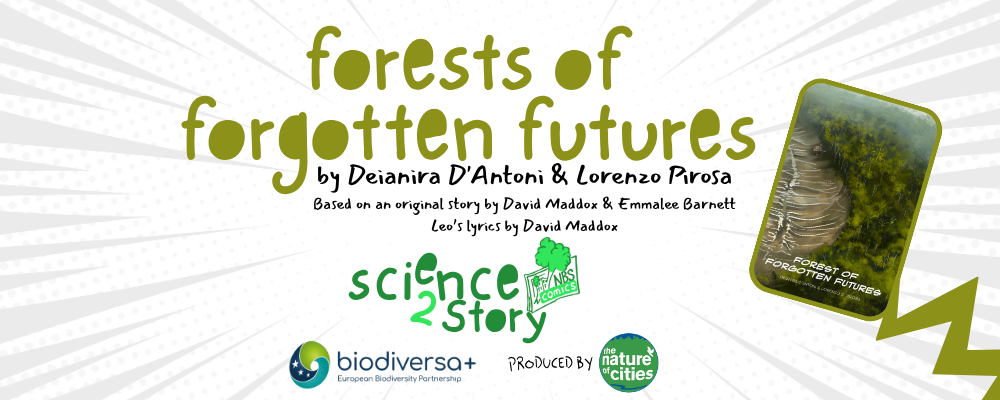The RESTORE (natuRe-basEd SoluTions for imprOving REforestation) project aims to study the interactions between plants, soil, and microorganisms (microbiomes*) in forest ecosystems facing increased drought stress due to climate change. Their project aims to develop biotechnological solutions based on observation of the nature and functioning of forest ecosystems in order to improve forest restoration. These solutions are based on the restoration of soil microbial diversity and on plant communication molecules such as hormones and regulators.
Read more about the project here
IN THE COMIC >
In Forest of Forgotten Futures, Rik shows Leo and Marie how they can improve their tree sapling growth with the use of fungi.

The researchers from RESTORE also sampled soils from the Observatoire du Chêne Pubescent (O3HP, Observatoire de Haute-Provence), a study site for the adaptation of Mediterranean forests to climate change, on a partial rain exclusion zone that enables them to simulate predicted climate change in the Mediterranean region and measure its impact on the forest. The bacterial strains isolated from these soils were selected for their tolerance to water stress, but also for their ability to produce molecules that retain water, protect plants, or communicate with them. These strains are used in association with trees. By restructuring the microbial communities associated with young trees, drought tolerance is improved, as is soil health.
Forests provide numerous ecological services: they purify the air, water, and wildlife, and, above all, they sequester carbon to limit global warming, by converting atmospheric CO2, a greenhouse gas, via photosynthesis. They are, however, subject to the pressures of climate change, the impact of which is combined with increased logging, creating a surge in timber prices that is compromising forest renewal, with an increase in the mortality rate of young trees over the last ten years or so.




